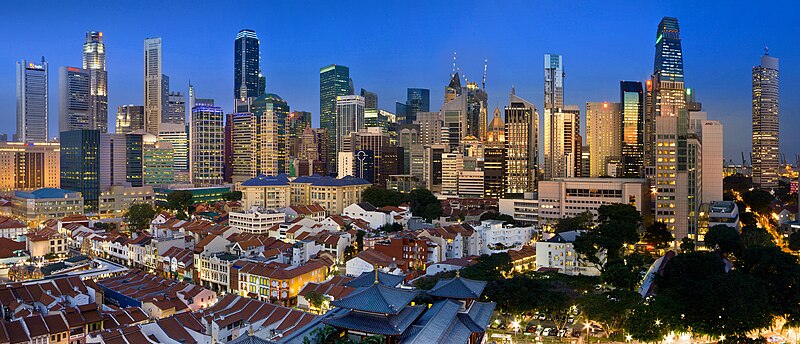Was it Laurie Anderson who said that VR would never look real until they learned how to put some dirt in it? Singapore's airport, the Changi Airtropolis, seemed to possess no more resolution than some early VPL world. There was no dirt whatsoever; no muss, no furred fractal edge to things. Outside, the organic, florid as ever in the tropics, had been gardened into brilliant green, and all-too-perfect examples of itself. Only the clouds were feathered with chaos - weird columnar structures towering above the Strait of China.
The cab driver warned me about littering. He asked where I was from.
He asked if it was clean there. "Singapore very clean city." One of those annoying Japanese-style mechanical bells cut in as he exceeded the speed limit, just to remind us both that he was doing it. There seemed to be golf courses on either side of the freeway. . . .
"You come for golf?"
"No."
"Business?"
"Pleasure."
...
The overt goal of the national IT2000 initiative is a simple one: to sustain indefinitely, for a population of 2.8 million, annual increases in productivity of three to four percent.
IT, of course, is "information technology," and we can all be suitably impressed with Singapore's evident willingness to view such technology with the utmost seriousness. In terms of applied tech, they seem to have an awfully practical handle on what this stuff can do. The National Computer Board has designed an immigration system capable of checking foreign passports in 30 seconds, resident passports in fifteen. Singapore's streets are planted with sensor loops to register real-time traffic; the traffic lights are computer controlled, and the system adjusts itself constantly to optimize the situation, creating "green waves" whenever possible. A different sort of green wave will appear if a building's fire sensor calls for help; emergency vehicles are automatically green-lighted through to the source of the alarm. The physical operation of the city's port, constant and quite unthinkably complex, is managed by another system. A "smart-card" system is planned to manage billings for cars entering the Restricted Zone. (The Restricted Zone is that part of central Singapore which costs you something to enter with a private vehicle. Though I suspect that if, say, Portland were to try this, the signs would announce the "Clean Air Zone," or something similar.)
They're good at this stuff. Really good. But now they propose to become something else as well; a coherent city of information, its architecture planned from the ground up. And they expect that whole highways of data will flow into and through their city. Yet they also seem to expect that this won't affect them. And that baffles us, and perhaps it baffles the Singaporeans that it does.
Tot articolul: http://www.wired.com/wired/archive/1.04/gibson_pr.html?1

Niciun comentariu:
Trimiteți un comentariu